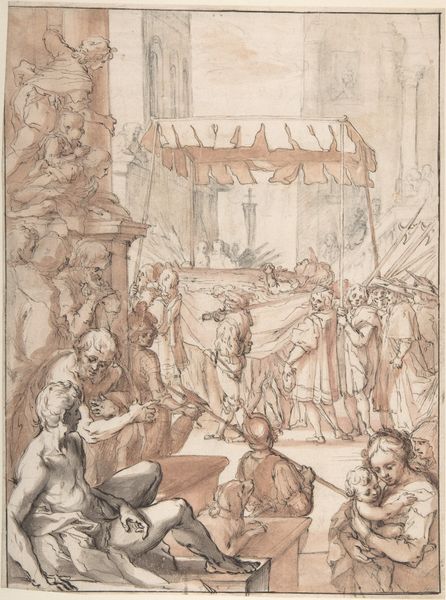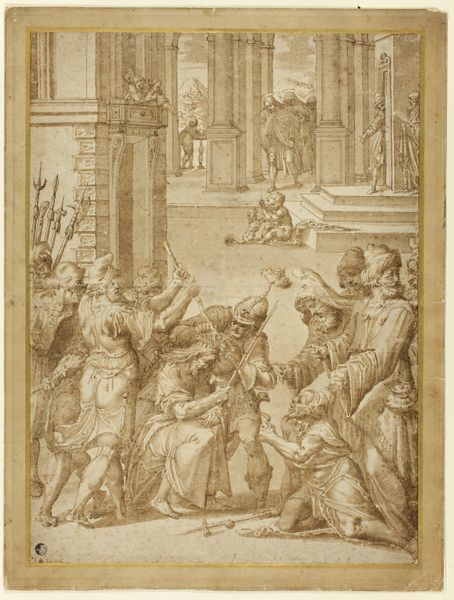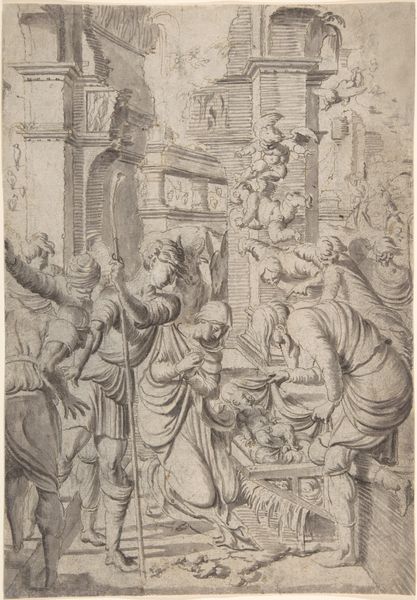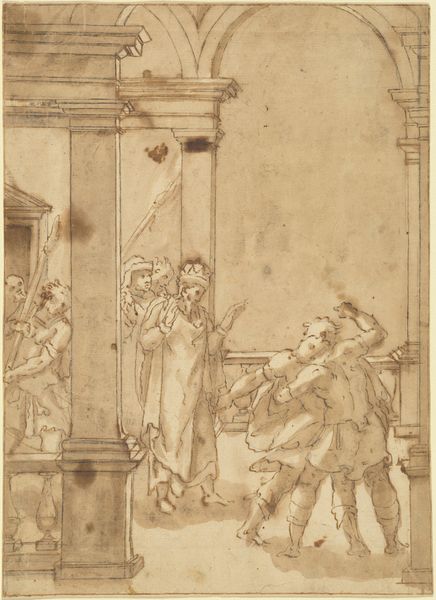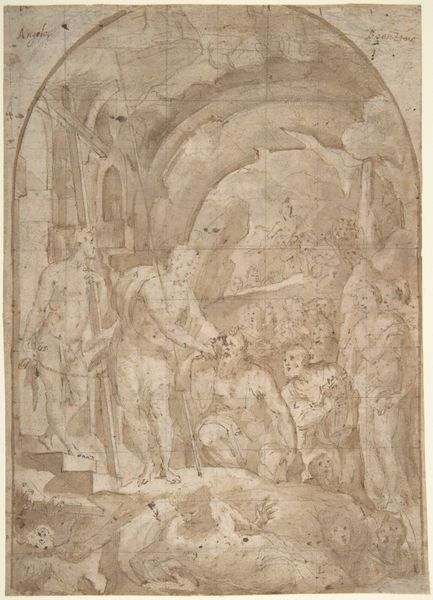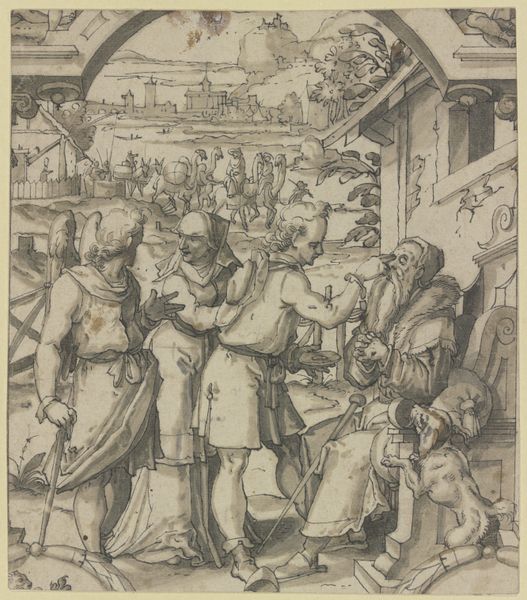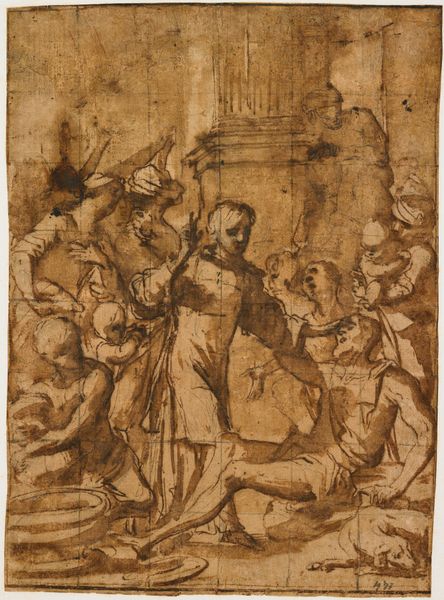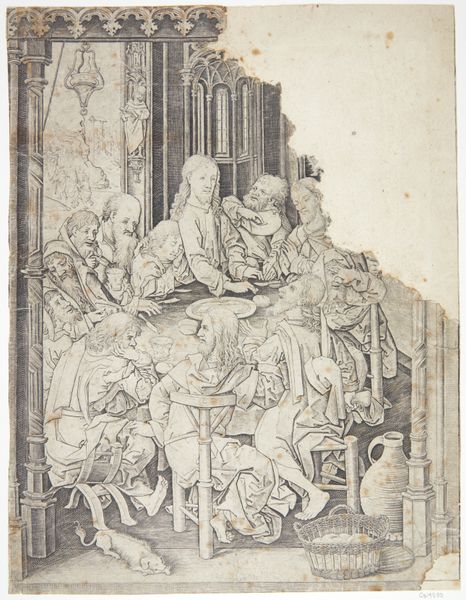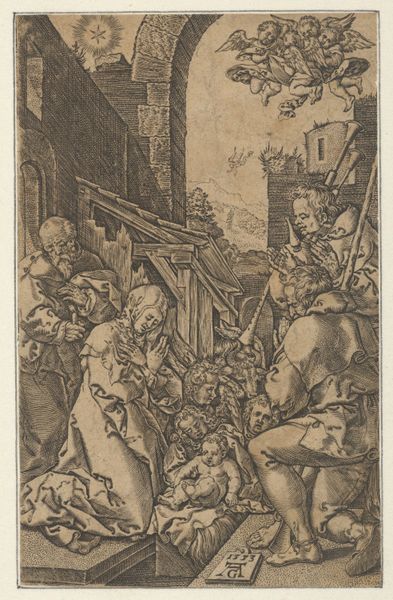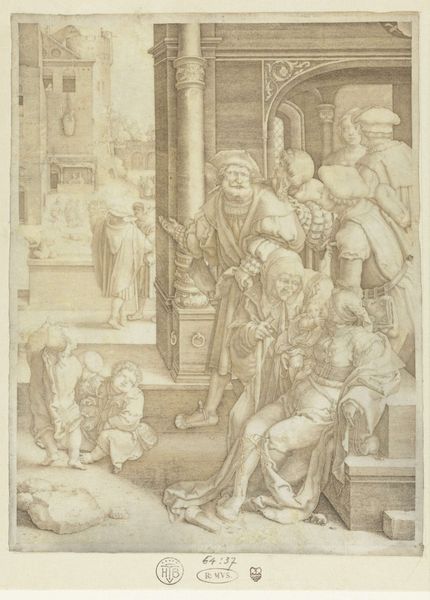
drawing, paper, ink, pencil
#
drawing
#
narrative-art
#
figuration
#
paper
#
11_renaissance
#
ink
#
pencil
#
history-painting
#
northern-renaissance
Dimensions: height 238 mm, width 186 mm
Copyright: Rijks Museum: Open Domain
Curator: Here we have a drawing entitled "Return of the Prodigal Son," created around 1505 by Jan van Scorel. It’s rendered in pencil, pen and ink on paper. Editor: It immediately strikes me as remarkably delicate, given the power of the biblical story it represents. The somber grays, almost like a faded memory, lend it an air of profound introspection. Curator: Indeed. Van Scorel’s command of line is evident in the rendering of the figures, especially the father's robes—observe how he suggests volume and texture with minimal strokes. The use of architectural elements to frame the composition also serves a symbolic purpose. Editor: How so? Is it suggesting something about wealth? The power of institutions at the time? Curator: Potentially. The architecture could represent the established order, both societal and religious, to which the son returns. However, structurally, the architecture lends stability to the drawing—anchoring the narrative. But the loose, unfinished lines... the sketchy quality suggests incompleteness and fragility. It emphasizes the inner turmoil of the characters involved. Editor: I see what you mean. The figures in the background feel more like ghosts, faint suggestions rather than solid forms. This echoes the psychological distance perhaps present even in reconciliation. Did social art play a huge part around this era? What role would the display of an image like this play for viewers at the time? Curator: History painting was used to both teach lessons from religious text, and solidify political messages. Given that images were much less commonplace then as they are now, I can imagine people studying the nuances of a drawing like this for hours. Editor: Fascinating to consider. I initially felt the work's fragility, but it becomes clear that there are deliberate, intricate elements at play here. Curator: I agree, examining its intrinsic qualities alongside its historical backdrop deepens our experience, certainly.
Comments
No comments
Be the first to comment and join the conversation on the ultimate creative platform.
